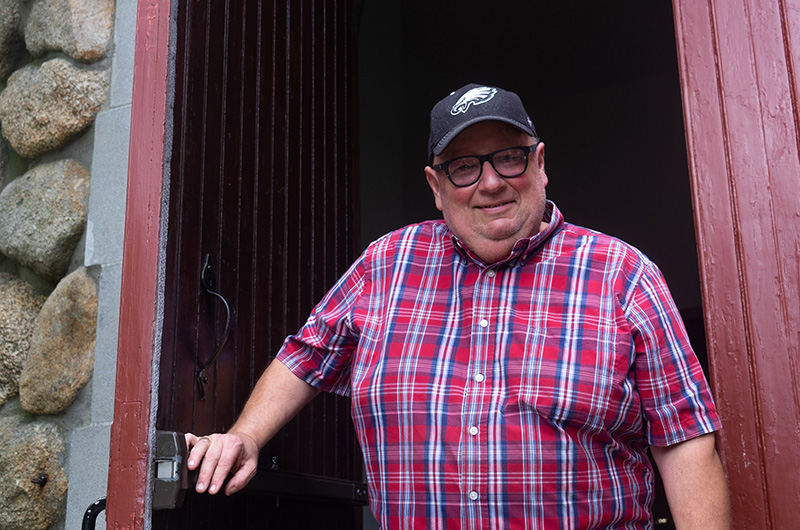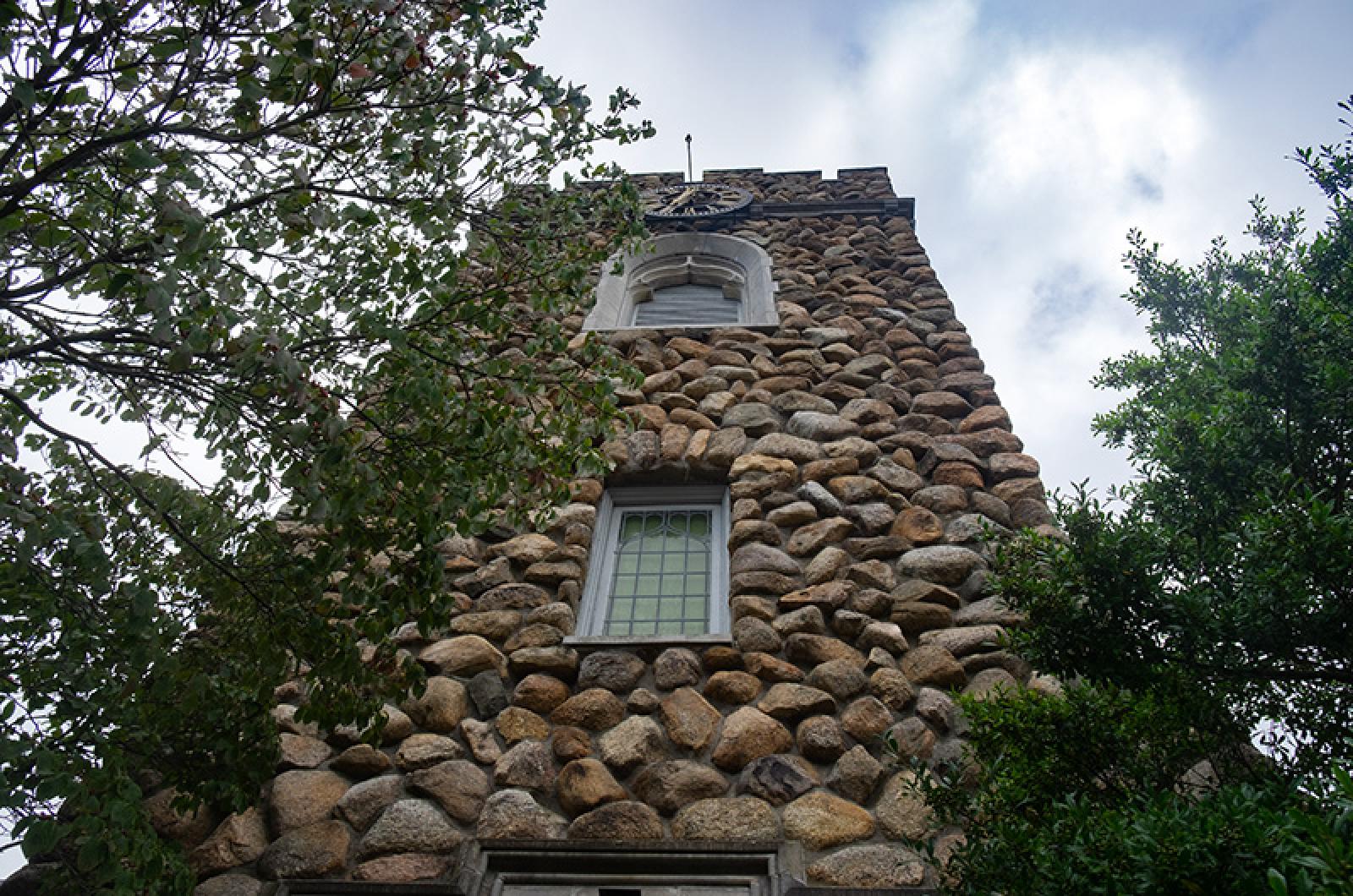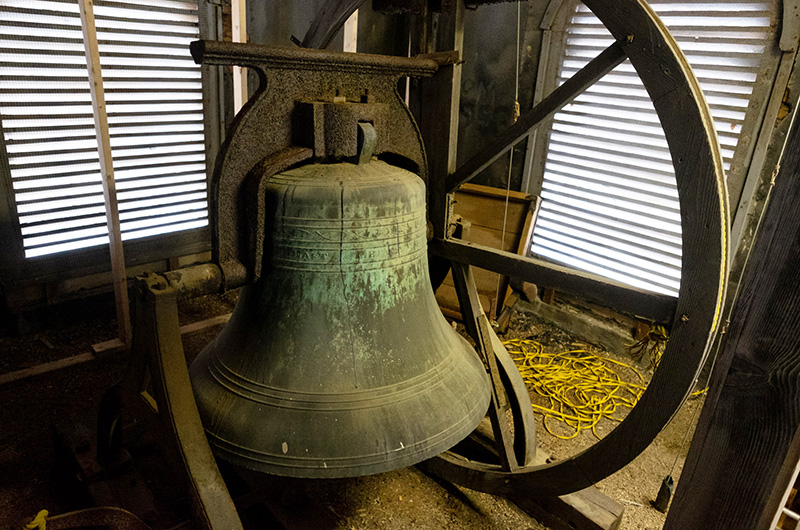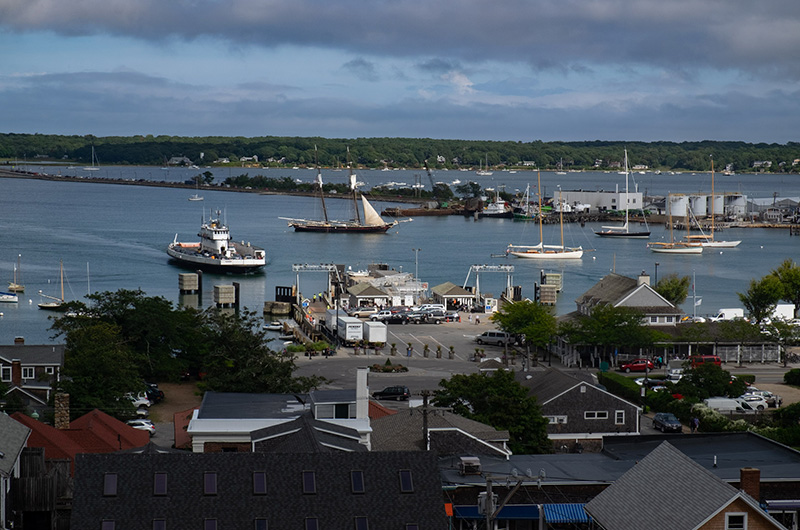Inside the closet of the pastor’s office at the Christ United Methodist Church in Vineyard Haven a cobwebbed wooden ladder extends up through a square hole in the ceiling.
On a recent afternoon, Tom Engley carefully ascended the ladder, wearing rubber boots. In the dusty, dimly lit space above, the many-wheeled mechanism of the church’s clock stood bolted to the floor. A pendulum dropped through the ceiling into the office below.
“The clock probably could work, but nobody has come up and wound it in years,” Mr. Engley said. As chairman of the trustees for the Stone Church, as it known to most Islanders, he is leading the effort to replace the roof and restore the interior structure of the church tower, including the nearly century-old clock and brass bell.
“It’s the town clock,” he said. “My mother used to look up at it from the beach to see when it was time to go home.”
He said the clock hasn’t been functional since the United Methodist congregation stopped worshipping in the church in the 1980s. Methodist congregants now meet at the Trinity church in Oak Bluffs under the leadership of the Rev. Roberta Williams, while the Stone Church is used by a congregation that worships in the Brazilian denomination, Assebléia de Deus. The church basement also houses the Island Food Pantry and Clothes-to-Go, nonprofit community programs that help people in need and operate year round.
“The food pantry has given us a great amount of energy,” Mr. Engley said.
And while its congregation has continued to evolve and migrate, the distinctive church and its stone tower remain an enduring landmark in Vineyard Haven.
The church was built in 1924 after a fire destroyed the previous church in the winter of 1922, according to Esther Hancock’s A History of Methodism in Vineyard Haven. The iconic facade of the new church was assembled from Island field stones. The project cost $58,367.34, according to records.
Herbert C. Hancock oversaw the project and Stephen Carey Luce was chairman of the building committee.
“I remember him from when I was a kid. He used to sit in the back,” Mr. Engley said of Mr. Luce, an influential Island financier and philanthropist. “I spent my whole childhood in this church.”
Standing by the dusty clock mechanism, Mr. Engley pointed out some rotting wood where the low ceiling of the room meets the inner wooden wall of the stone tower.
“These are original beams,” he said. Then considering the rot, he added: “I’m never quite comfortable when I’m up here.”

Undeterred, he climbed another ladder, situated directly above the first one and leading to another chamber above, this one dominated by a massive bronze bell. Afternoon light seeped in through the louvers and a great wooden wheel, connected by ropes to the clock contraption below, looked poised to rock the bell back and forth. Decades-old echoes were almost audible.
A chain of fish figures encircle the bell along with the words “East Medway Mass.” and “George H. Holbrook”.
“They made hundreds of bells at that bell foundry. They’re all over New England,” Mr. Engley said.
The tower, roof, clock and bell have already been assessed, Mr. Engley said, and the cost of restoring the tower is estimated at around $179,000. Mr. Engley plans to hire International Chimney Corp., the same engineering firm that relocated the Gay Head Light in 2015, to do the work.
He said the church has already received $37,500 in Community Preservation Act funds and another $25,000 that came from the estate of Island engineer George Wey. The rest will come from fundraising. Mr. Engley hopes to begin work in November.
Leaving the belfry, Mr. Engley climbed yet another ladder to a last cramped room, where sheet metal was pulling away from a low ceiling. He ascended a final ladder, pushing open the hatch that led to the tower’s roof. A few mossy branches and sticks fluttered down.
“Osprey nest,” he said.
Finally he emerged onto the tower roof, and looked out over the town and the water. Carefully avoiding the Verizon cellular transmitters installed there, he pointed out the open drawbridge, the schooner Shenandoah in the harbor, the ferry Governor docking at the Steamship Authority terminal, the Martha’s Vineyard Playhouse across the street and the whole village of Vineyard Haven nestled neatly as it has been since the first Methodist preacher, a former enslaved person, arrived on the Island in 1787.
The view was dizzying, the history complete.








Comments (7)
Comments
Comment policy »